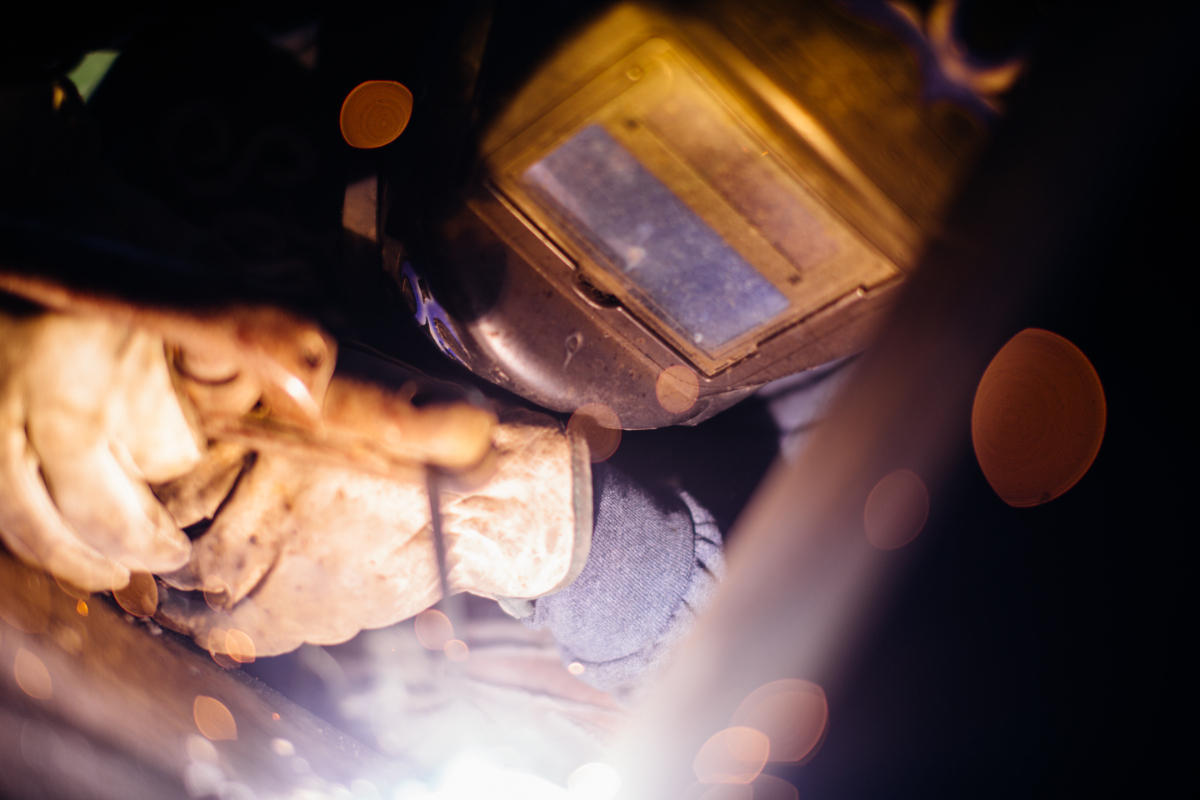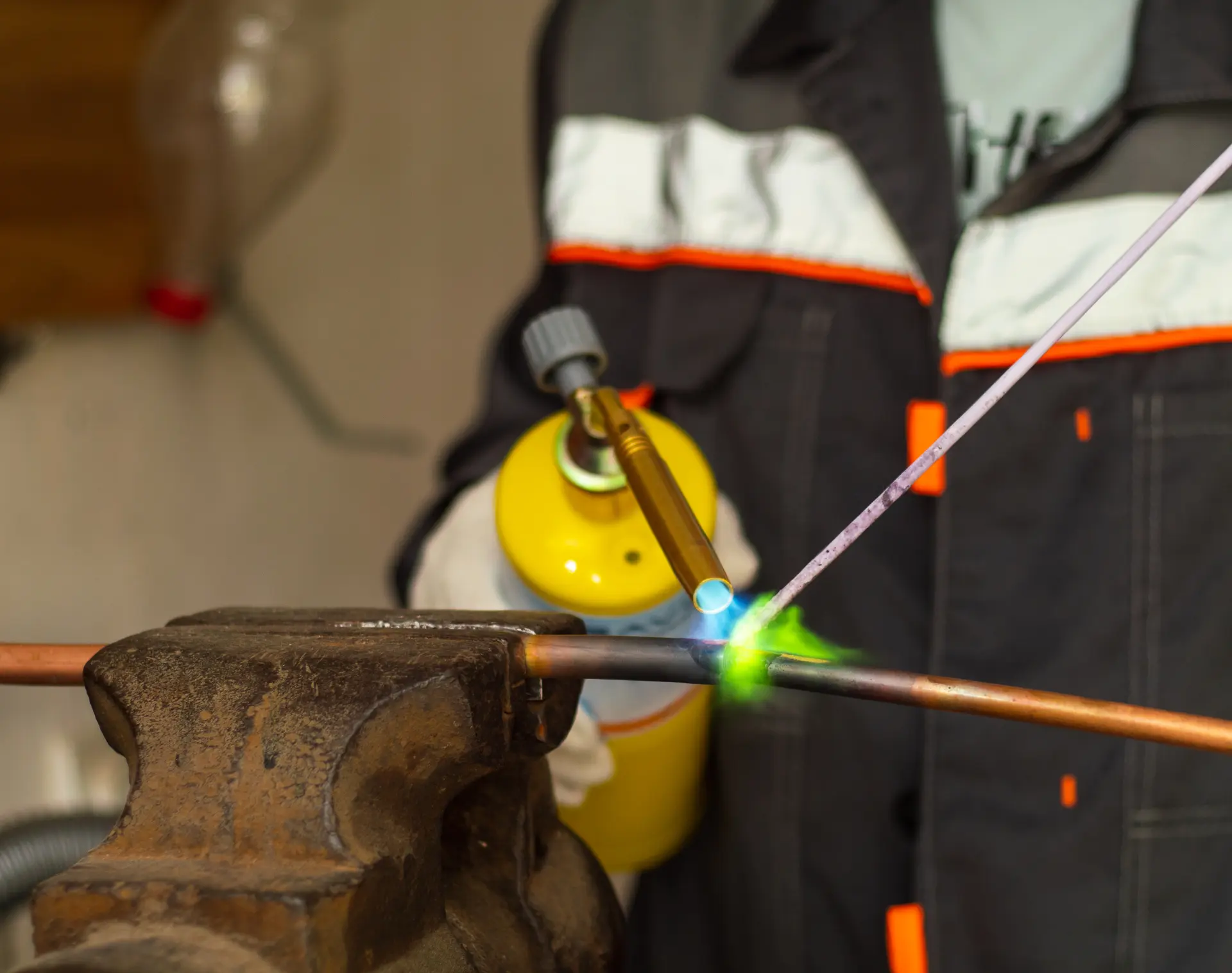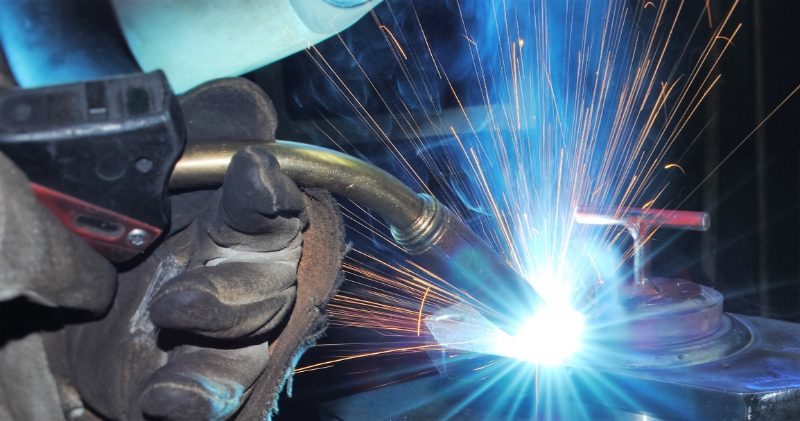What is acetylene cutting and how does it work? Discover how our high-temperature flame cuts with efficiency and precision, ideal for thick steel and ferrous metals.
How Acetylene Cutting Works
Acetylene cutting, also known as oxy-acetylene cutting or oxy fuel cutting, is a cutting process that’s used to cut metal by combining oxygen and acetylene gas to generate an intense flame. This method is commonly used in the construction, metal fabrication, and shipbuilding industries since it can cut through thick steel efficiently.
The process begins by igniting a mixture of acetylene and oxygen in a specialised cutting torch. Acetylene burns at a high temperature and can reach up to 3,500°C when it is combined with oxygen. This high flame temperature can bring the metal to its ignition temperature, making it easier to cut.
Once the metal is preheated to a suitable temperature, a separate stream of pure oxygen is introduced through the cutting nozzle. This oxygen is then directed onto the heated surface, causing a rapid oxidation chemical reaction that forms iron oxide, often called slag. The force of the oxygen stream, also called the oxygen jet, blows the molten metal and slag away, creating a clean cut.
Acetylene cutting is particularly effective for mild steel and other carbon steel because these ferrous metals oxidise quickly at high temperatures. However, this type of flame cutting is not suitable for non ferrous metals like aluminium and some grades of stainless steel, as they do not produce the same oxidation reaction needed to sustain the cut.
Key Components of an Acetylene Cutting System
Acetylene cutting relies on a specialised cutting system to generate and control a high-temperature flame for cutting metals. The key components of this system include the oxy fuel torch, acetylene and oxygen cylinders, regulators and hoses, plus a set of nozzles sized for the material thickness.
The cutting torch is the main tool used in acetylene cutting. It consists of a handle, a mixing chamber, and a nozzle that directs the flame onto the metal. The torch has separate valves for oxygen and acetylene, allowing the user to control the gas flow and preheat flame. Some torches have a lever for cutting oxygen to start and stop the oxygen jet during the cut.

Acetylene is stored in a cylinder that contains a porous filler saturated with acetone. This design stabilises the gas and reduces the risk of decomposition. Oxygen is stored in separate high pressure cylinders to support combustion and to oxidise the metal efficiently. The cylinders are fitted with safety valves and pressure relief devices.
Regulators reduce cylinder pressure to a safe working level. Hoses transport the gases from the cylinders to the torch and are colour coded for safety, with red for acetylene and blue for oxygen.
Nozzle choice affects preheat, cutting speed, and cut quality. A well maintained set of equipment helps produce consistent results.
The Role of Oxygen in Acetylene Cutting
Oxygen enables both the high-temperature combustion and the oxidation needed to cut metal. It has two main functions. First, oxygen mixes with acetylene to produce the preheat flame. Second, a separate supply of cutting oxygen flows through the nozzle as a focused oxygen jet to drive the cut.
When oxygen and acetylene are mixed in the correct ratio, the preheat raises the base metal to its ignition point. Once the steel is hot enough, the cutting oxygen starts a rapid oxidation reaction.
The iron oxide created has a lower melting point than the surrounding steel, so it becomes molten metal that the oxygen stream blows clear. This produces a narrow kerf and can improve cutting speed while keeping fuel use under control.
Fuel Gas Choices and Alternatives
While oxy acetylene is widely used, other fuel gases are common. Propane and natural gas are used in many workshops and on site because the fuel cost is often lower.
Propylene and methylacetylene propadiene, often called MAPP gas, are also used. Some companies use acetylene propane for general heating and for cutting where very high preheat is not required. Each fuel gas has a different preheat profile, flame temperature, and speed.
In simple terms, acetylene produces the hottest preheat flame at the nozzle. This can reduce pierce time and helps when cutting thicker plate. Propane and natural gas have a cooler preheat but a strong secondary flame that is effective for preheat and for heating applications.
Choice depends on the material, thickness, cutting speed needed, and the types of cuts being made. Oxygen and fuel gas selection should take account of local supply, cost, and the range of work.
What Materials Can Be Cut

Oxy fuel cutting is used to cut ferrous and non alloyed steels, such as mild steel and many grades of carbon steel. It is typically used to cut steel plate and sections across a wide thickness range, from thin sheet up to very thick materials.
The process is not suitable for many non ferrous metals. Aluminium, copper and some stainless steels do not support the same oxidation reaction, so plasma cutting or other methods are often a better choice for these materials.
Piercing, Starting and Finishing the Cut
Before the oxygen jet is used to cut, the material is heated. The operator holds the torch in place and preheats the surface until it reaches the ignition temperature. The cutting oxygen is then applied to pierce the plate.
For thicker materials, it may be necessary to use a short pierce cycle so that molten metal is blown away without spatter returning to the nozzle. Once the pierce is complete, the torch is moved along the cut line at a steady speed. At the end, the operator reduces the cutting oxygen to finish cleanly and avoid heavy slag on the underside.
Quality, Speed and Distortion Control
Cut quality depends on several factors, including nozzle size, gas mixture, oxygen purity, and torch stand-off. A clean nozzle orifice keeps the oxygen stream directed and stable. Correct preheat helps produce a smooth cut face with minimal drag lines. Pure oxygen and correct pressure can improve cutting speed and reduce slag.
Heat input can cause distortion, especially on thin materials. To control this, reduce preheat time, use proper travel speed, and plan the sequence of cuts so that heat is spread across the plate. When possible, clamp the workpiece to support the cut and to keep the surface flat. For long cuts, a track torch or CNC system helps maintain constant speed and consistent results.
Safety and Good Practice

Safety is central when working with oxygen and fuel. Keep cylinders upright and secured. Check regulators, hoses and flashback arrestors before use. Keep oil and grease away from oxygen fittings.
Purge the torch to remove mixed gases before lighting. Use a spark lighter rather than open flames. Wear suitable PPE including eye protection and gloves. Work in a well ventilated place and keep flammable materials away from the work area. After cutting, the material remains very hot. Mark the area and allow time for the part to cool.
Always check for leaks with an approved solution. Do not use soap that contains oils. Close cylinder valves when the job is finished. Store equipment so the nozzles stay clean. Good safety practice protects people and equipment and helps keep the cutting system in service for a long time.
Common Applications and Industries
Oxy acetylene cutting is used to cut steel for fabrication, repairs, and demolition. It is used to cut beams on site, trim steel plate for shipbuilding, and prepare edges for welding cutting operations.
The process is also used to pierce holes, to remove damaged sections, and to cut shapes where access is limited. With a steady hand and the right torch, the method is effective for a variety of applications in workshops and in the field.
Comparing Acetylene Cutting to Other Processes
Acetylene cutting is different to plasma cutting and laser cutting. Plasma uses an electrical arc and gases such as compressed air, nitrogen or argon to melt and blow out the metal. It works well on ferrous and non ferrous metals and can be very fast on thin sheet.
Laser uses a focused beam to melt or vaporise material and can make very fine detail. Oxy fuel cutting remains a strong choice for thick sections of steel, for on site work, and where the equipment needs to be simple and robust.
Set-up Tips to Improve Results

Use the correct nozzle for the material thickness. Set regulator pressures to the values recommended for the nozzle and gas type.
Preheat until the surface is evenly heated and bright. Hold a steady stand-off so the oxygen jet stays aligned. Keep the torch vertical on plate cuts.
If slag is produced, slow down slightly or increase oxygen pressure within the safe range. If the cut face shows heavy drag lines, adjust speed or check for a blocked nozzle. Good set-up and control can improve cut quality and reduce rework time.
Frequently Asked Questions
Oxy acetylene cutting is not suitable for most stainless steel because the reaction needed for cutting does not continue in the same way as with mild steel. Processes such as plasma cutting are normally used instead.
With the right nozzle and oxygen supply, operators can cut a wide thickness range, from thin sheet to very thick plate. Piercing thick material takes longer and needs more preheat, but the process is effective when set up correctly.
Acetylene gives the fastest preheat and is suitable for heavy sections. Propane, propylene and natural gas are also used and can be more economical for heating and for repetitive cutting on medium thickness materials. Choice depends on the application, the materials, and local supply. Oxygen and fuel selection should match the job in hand.
Care and Maintenance
Keep nozzles clean and replace worn parts. Store hoses away from sharp edges and heat. Check filters and flashback arrestors at the intervals advised by the manufacturer. Inspect the content gauges and replace damaged regulators. Regular checks reduce downtime and help the equipment produce consistent cuts over time.
Contacting Professional Acetylene Cutting Services
If you need guidance on fuel gases, nozzle choice, or cutting oxygen settings for a specific material and thickness, you can email Faraday Fabrications with details of your cutting application and the equipment you use. Our team will review your content and reply by email with simple steps you can follow.
Faraday Fabrications provides professional acetylene-cutting services across Margate and Kent. We can cut through thick steel and ferrous metals efficiently and deliver clean, accurate cuts for a range of applications.


